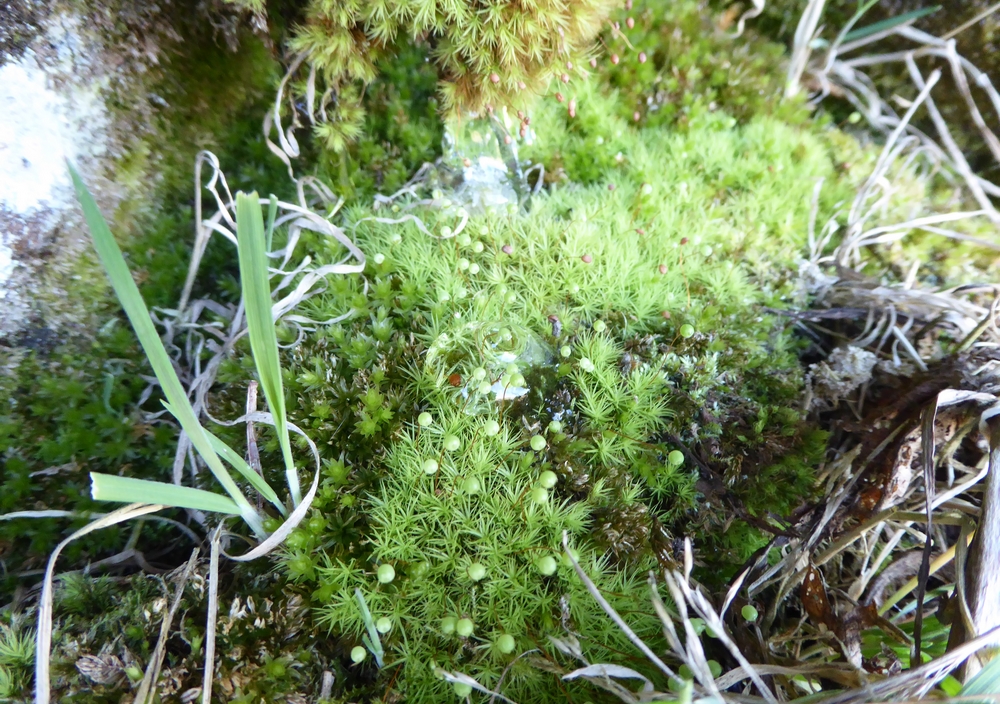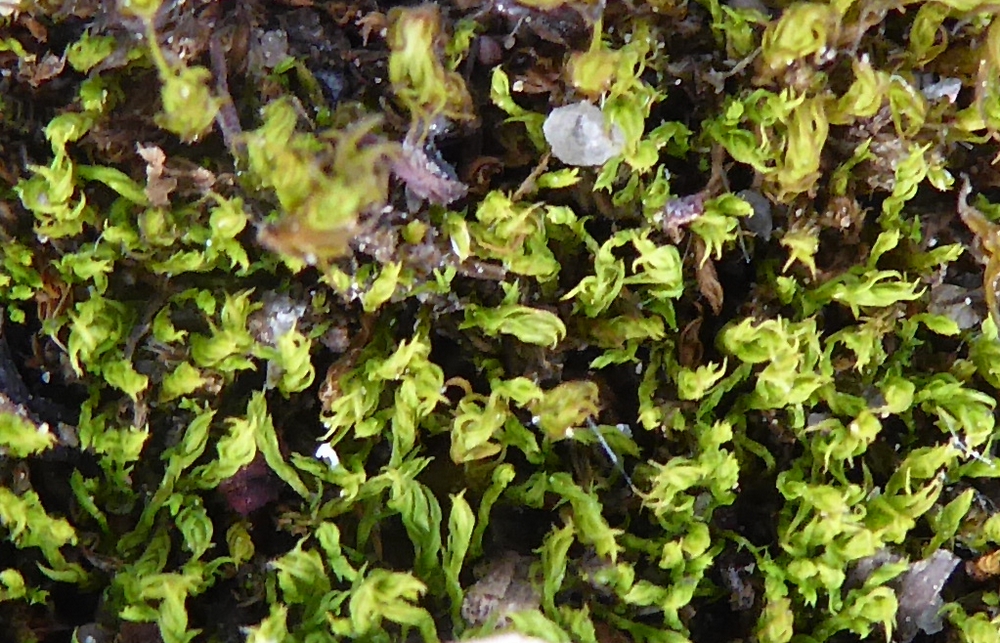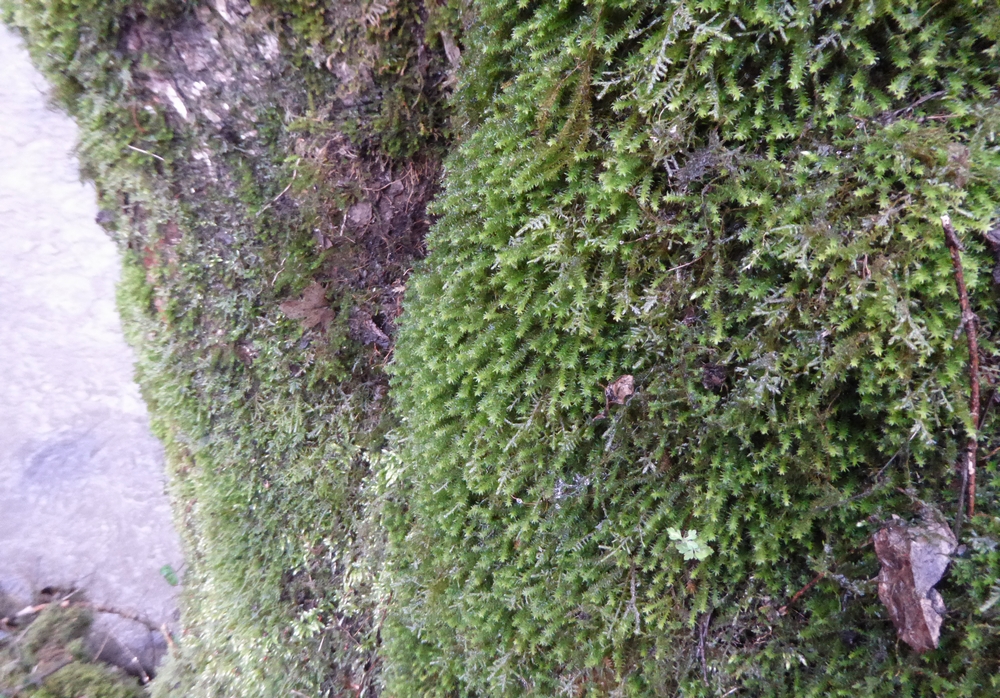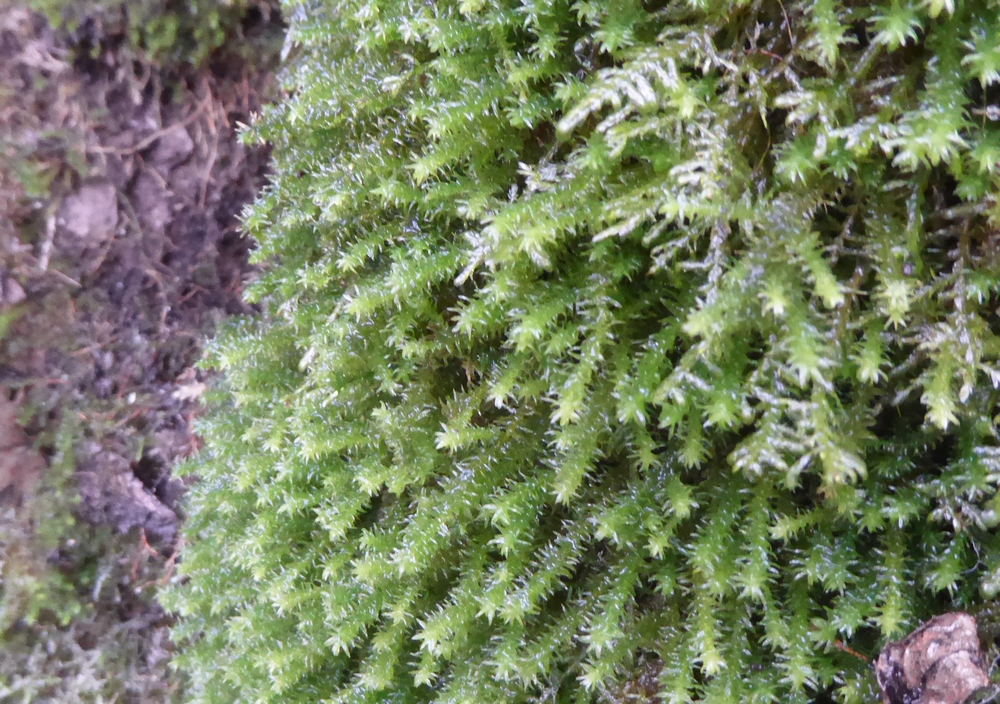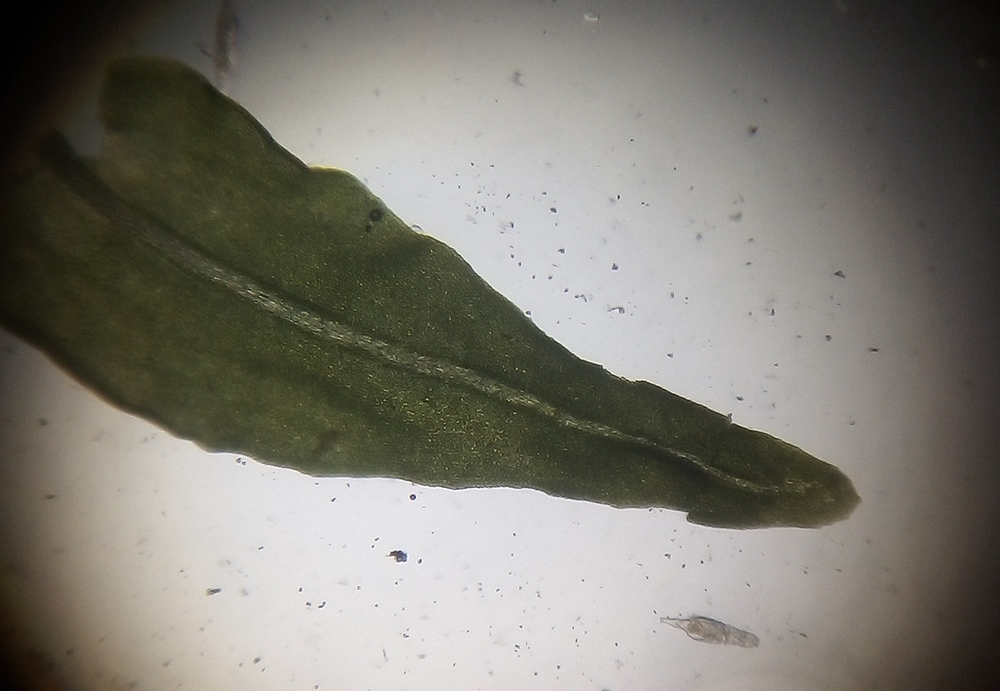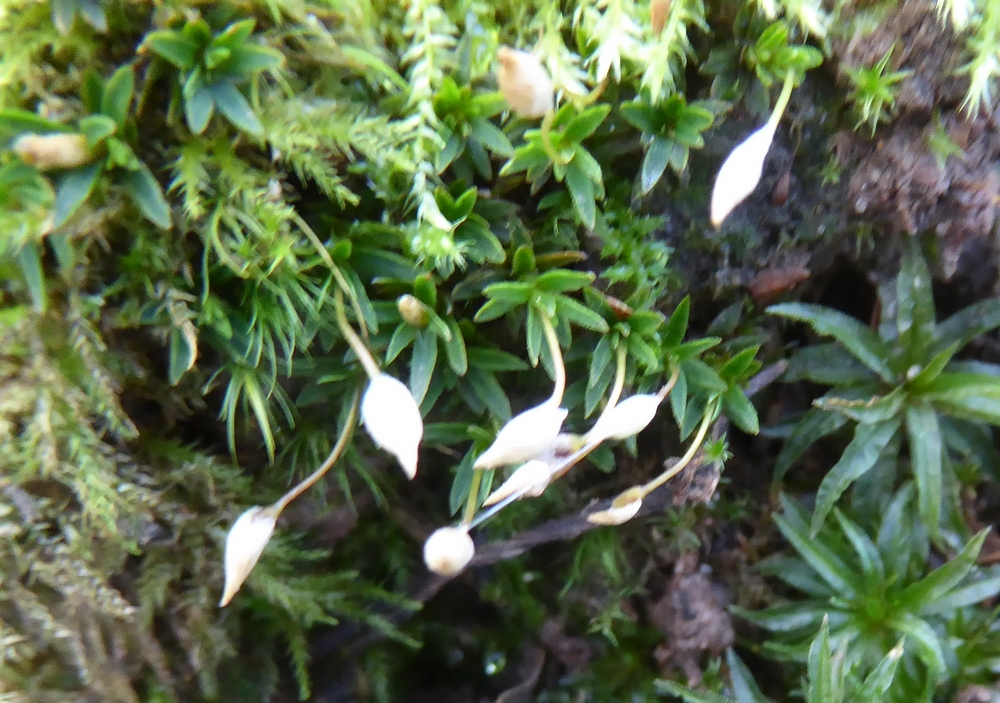Elegant Silk-moss

I began to notice this moss growing in flat smooth patches around the larger Mnium hornum mosses on the steep bare banks of Keils Den. They seem to be a regular partnership here.

The shoots are generally flat with a silky sheen.

However, I’ve also found it looking a bit fluffier.

The book says it likes – or tolerates – an acid substrate, and bare earth banks in woodland seem to be a classic habitat.
Up close, you can sometimes see the bunches of small vegetative branchlets which grow in the leaf axils. They’re particularly obvious at the shoot tips. The smooth silky look gives way to a fuzzy appearance.

In the picture below, the shoot on the right is covered in these branchlets.

It seems to vary in the width of the shoots, and can look beautifully glossy or a bit like rats’ tails…

But I love it when mixed in with the other mosses – such a contrast with the bushy Mnium and the spiky Polytrichum.

Pictures taken in Keil’s Den, 2023 and 2024, and the grounds of Merchiston Castle School, Edinburgh, January 2024.














